Measuring in at nearly 44 inches in diameter, this giantRafflesia tuan-mudaeis the largest bloom ever recorded.
Also known as acorpse flower, itis one of 28 species in theRafflesiagenus.
Its nickname comes from the incredible stench the plant gives off as it blooms.
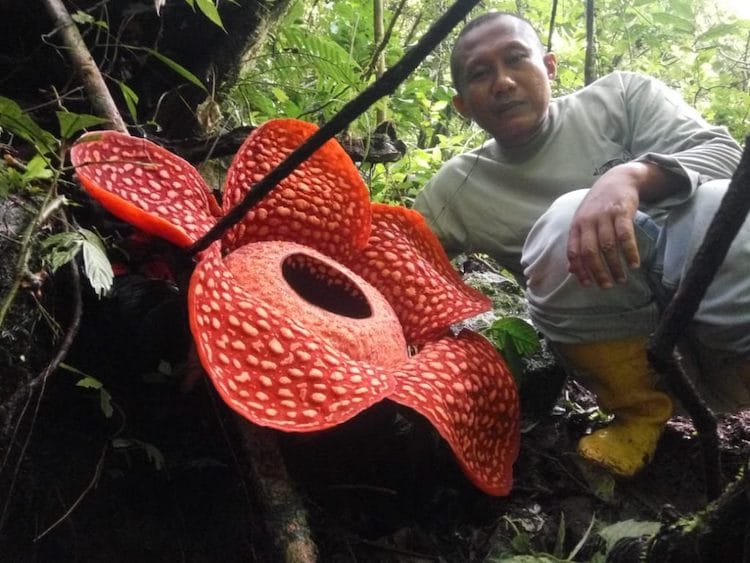
Photo:West Sumatra Natural Resources Conservation Center
Found throughout Southeast Asia,Rafflesiaare most common to Borneo and Sumatra.
In fact, the record-breakingRafflesiawas recorded in the Maninjau Natural Reserve in West Sumatra.
Interestingly, these flowers have no roots or leaves.
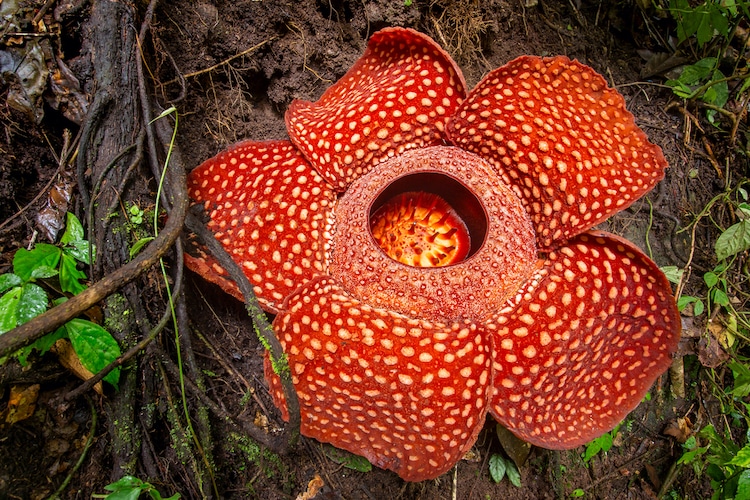
Photo:Stock Photosfrom Mazur Travel/Shutterstock
They are parasites living off their hosts, which happen to be vines from theTetrastigmagenus.
(In fact, this exceptionally largeRafflesiauses the exact same host as the previous record holder.
That bloom, which measured about 42 inches, was recorded in 2017.)
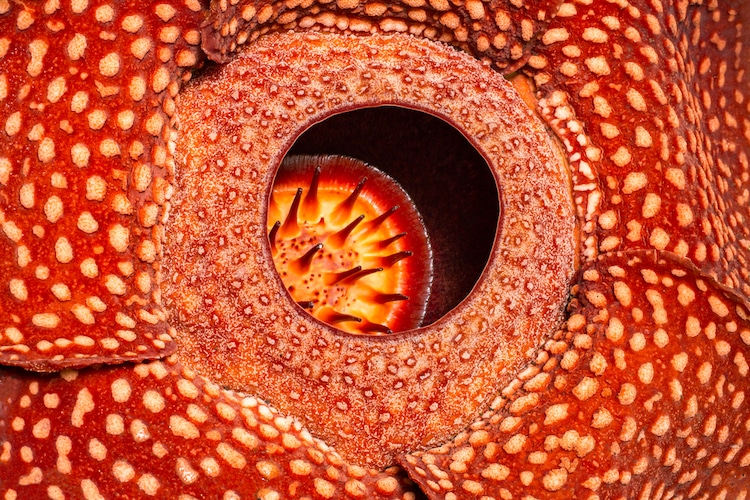
Photo:Stock Photosfrom Mazur Travel/Shutterstock
The parasitic plants embed themselves into the tissue of the vines and feed off of their water and nutrients.
Unlike other types ofRafflesia, which can bloom in vines hanging from the air, theR.
tuan-mudaesticks to the ground, making its presence known only when its petals unfurl.
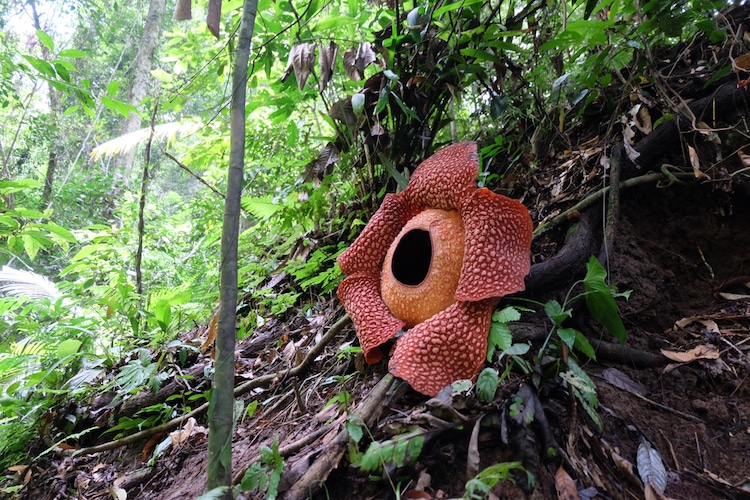
Photo:Stock Photosfrom Darren Kurnia/Shutterstock
While aRafflesiain bloom is a sight to see, it comes with an unfortunate consequencethe foul odor.
This rotting meat smell is meant to attract fliestheir main pollinators.
Given the unfavorable odor it emits, it makes sense that this bloom is referred to as acorpse flower.
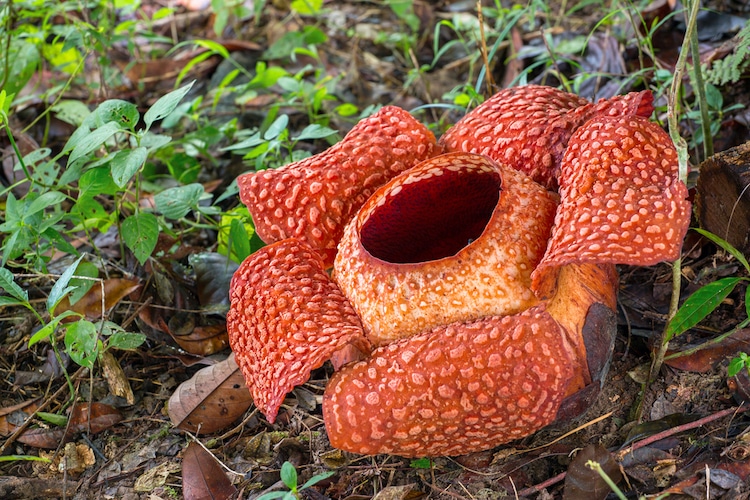
Photo:Stock Photosfrom Mazur Travel/Shutterstock
However,Rafflesiaisn’t the only flower to be called a corpse.
While also giving off the smell of rotting flesh when in bloom,A.
titanumis much easier to cultivate as it only requires a pot with adequate space to grow.
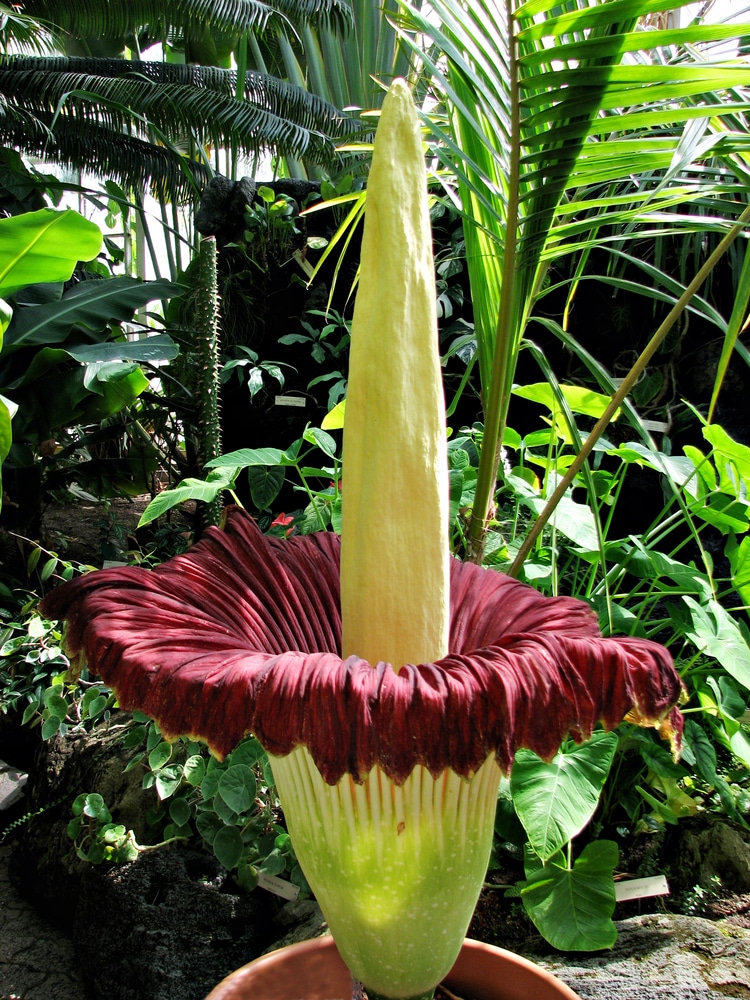
Photo:Stock Photosfrom Paul Marcus/Shutterstock